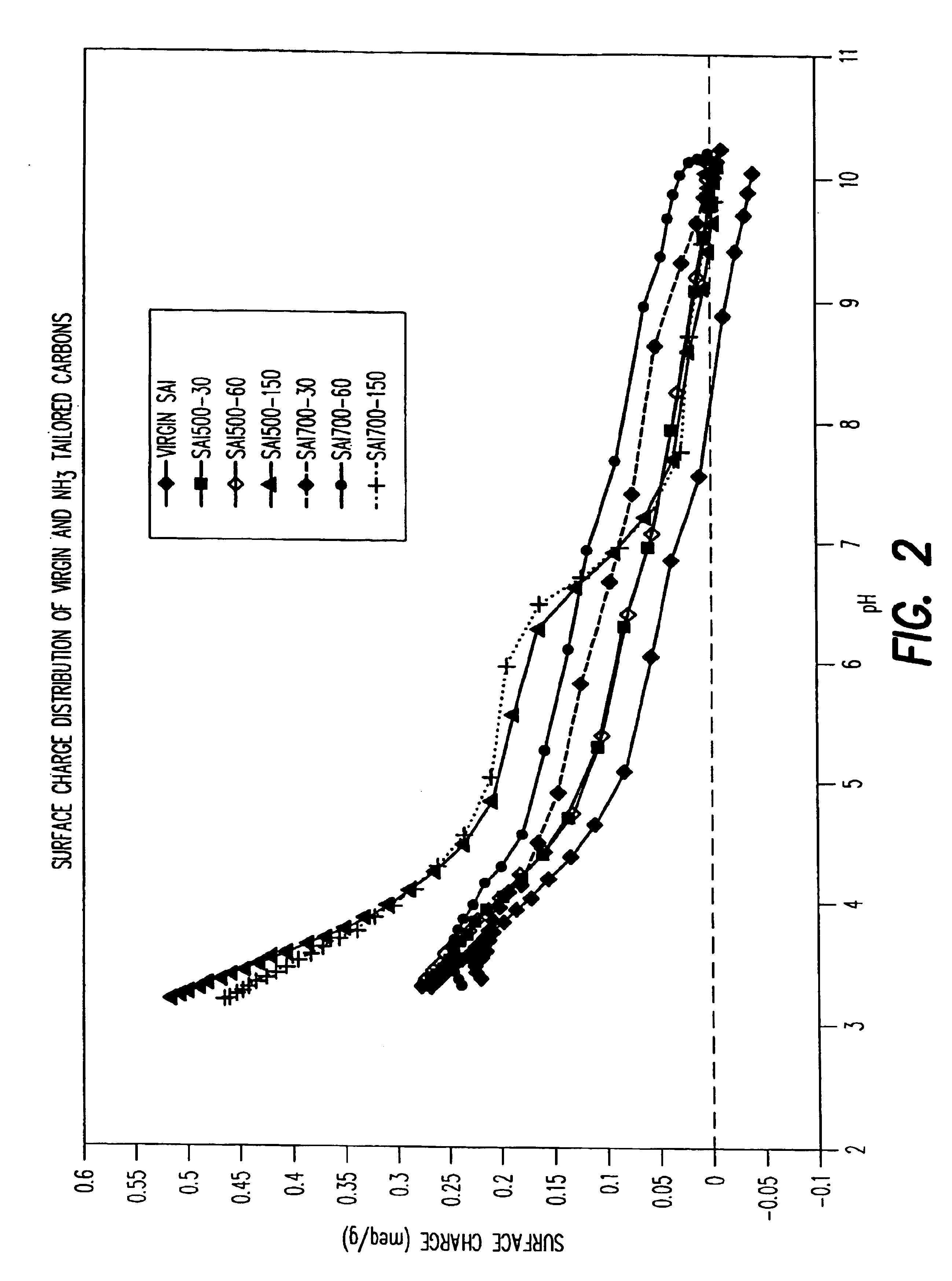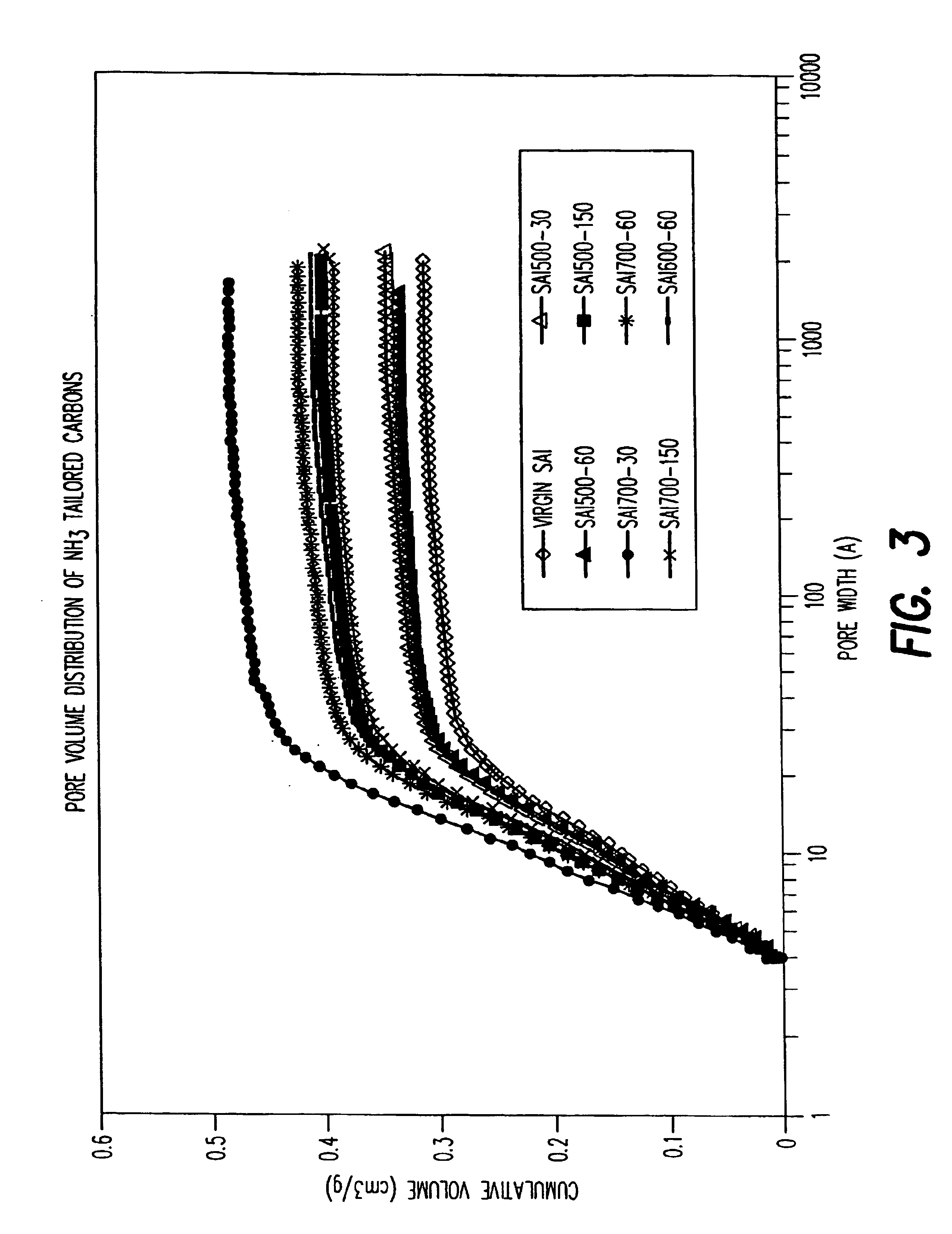Method for perchlorate removal from ground water
a technology of ground water and perchlorate, which is applied in the direction of water/sewage treatment by ion exchange, other chemical processes, separation processes, etc., can solve the problems of affecting people's thyroid gland, drinking water, especially in summer months, and becoming extremely scar
- Summary
- Abstract
- Description
- Claims
- Application Information
AI Technical Summary
Benefits of technology
Problems solved by technology
Method used
Image
Examples
example 1
[0080]Test were conducted via small Scale Simulation tests that were sized to simulate performance in a full-scale adsorber. Correlation between the Small-Scale Simulation Tests and full scale performance was confirmed by comparing several sets of conditions. In these tests, ground water from Redlands, California that contained 75 ppb of perchlorate was passed through Small Scale Simulation Test columns that contained GAC. The GAC was tailored in ways that enhanced its capacity to adsorb perchlorate. Perchlorate removal performance was monitored by noting how many bed volumes of water were processed before the perchlorate began to appear at significant levels in the effluent.
example 2
[0081]To extend the time that GAC will remove perchlorate, the GAC was tailored with a cationic polymer. The polymer was recirculated through the column for 2 days. After this time, perchlorate-laden water (approximately 75 ppb) from Redlands, Calif., was passed through the column and the effluent was collected and tested for perchlorate. Perchlorate breakthrough for this column occurred at 4200 bed volumes (breakthrough for virgin GAC occurred after 1200 bed volumes), increasing the time to breakthrough to 3.5 times that of the virgin GAC. The results of this experiment can be seen in FIG. 11.
example 3
[0082]GAC was treated with 100 bed volumes of ferric salt monomer (500 mg / L as Fe) plus 580 mg / L of oxalic acid, acetic acid, or citric acid. A column of virgin carbon was run as a control. Perchlorate laden water (approximately 75 ppb) from Redlands, Calif. was passed through each column and the effluent was collected and measured for perchlorate. The results of these Small-Scale Simulation tests are found in FIG. 12. The column treated with the ferric salt monomer (FeCl3) and acetic acid performed nearly identical to that of the ferric salt monomer and oxalic acid with perchlorate breakthrough at 1500 bed volumes. Both of these preloaded GAC beds performed better than the virgin GAC. Acetic acid is a useful alternative to oxalic acid because acetic acid is a common component in food and this method may be looked upon more favorably than using oxalic acid.
PUM
| Property | Measurement | Unit |
|---|---|---|
| Temperature | aaaaa | aaaaa |
| Fraction | aaaaa | aaaaa |
| Fraction | aaaaa | aaaaa |
Abstract
Description
Claims
Application Information
 Login to View More
Login to View More - R&D
- Intellectual Property
- Life Sciences
- Materials
- Tech Scout
- Unparalleled Data Quality
- Higher Quality Content
- 60% Fewer Hallucinations
Browse by: Latest US Patents, China's latest patents, Technical Efficacy Thesaurus, Application Domain, Technology Topic, Popular Technical Reports.
© 2025 PatSnap. All rights reserved.Legal|Privacy policy|Modern Slavery Act Transparency Statement|Sitemap|About US| Contact US: help@patsnap.com



